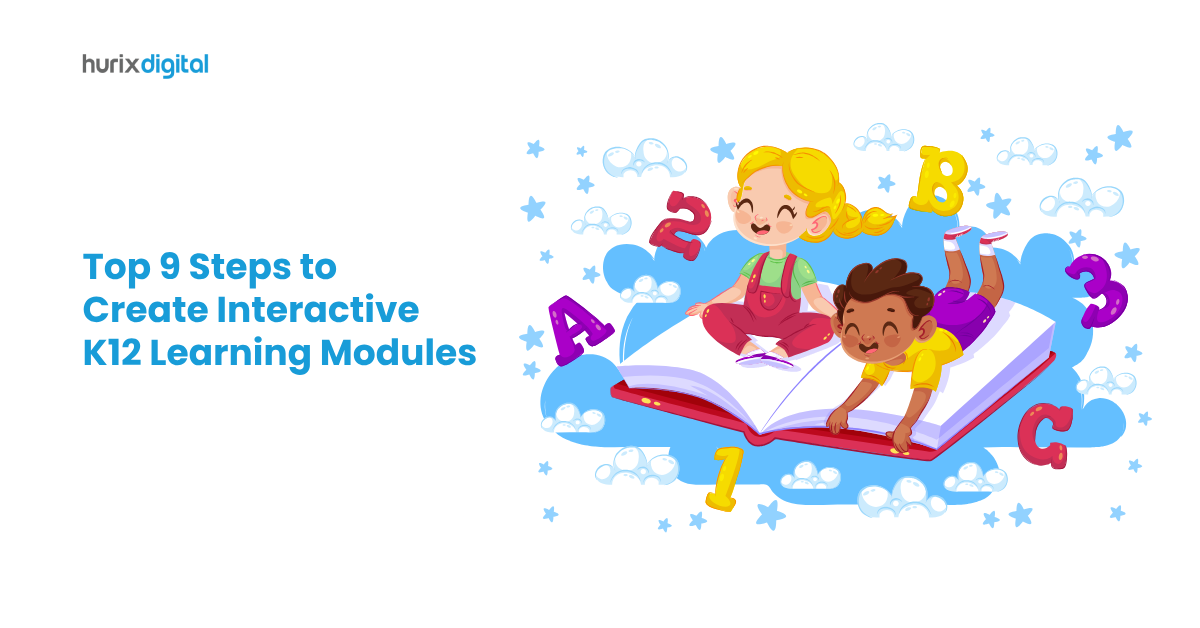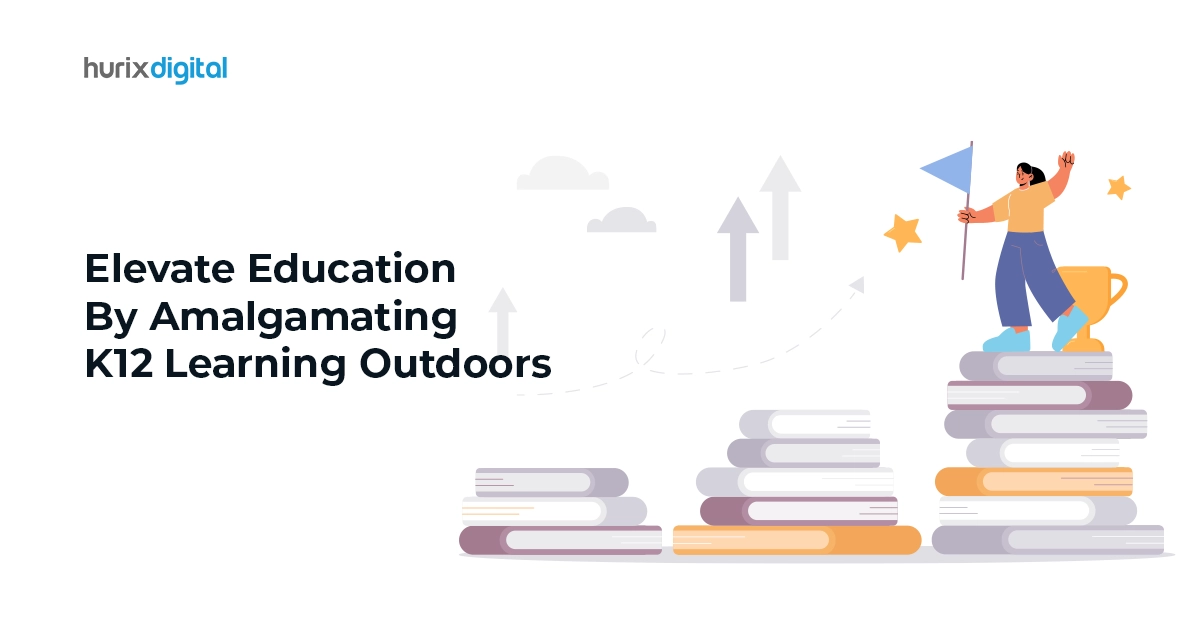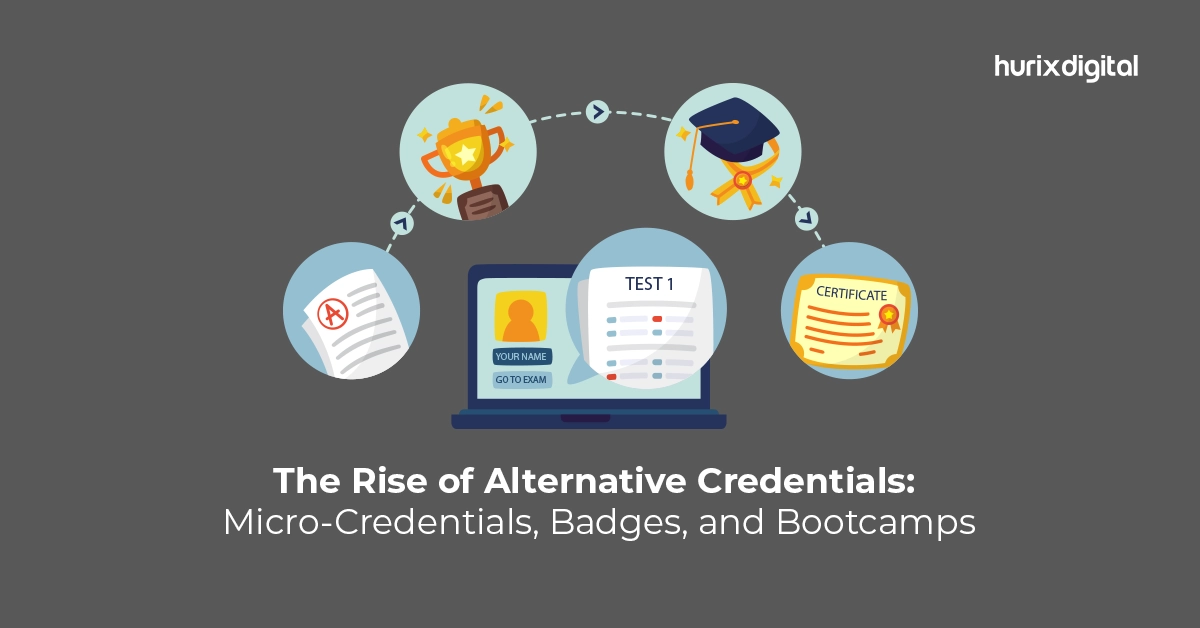
Top 9 Steps to Create Interactive K12 Learning Modules
Summary
Get practical steps for designing interactive K12 learning modules that engage students and enhance their educational experience through dynamic content and activities.
The landscape of education is undergoing a significant shift. Taking the lead in this digital transformation is K12 learning, highly recognized for its ethos centered around students.
With evolving technology in K12 education, eLearning for K12 students has ushered in an era of interactive educational content and immersive educational modules that are keeping students captivated. This revolution is shaking up the K12 curriculum development process as the focus shifts from textbook-based learning to vivacious multimedia learning modules.
According to a recent Gartner study, global Edtech spending related to K12 education is predicted to reach $404B by 2025, suggesting a rapid adoption of digital tools in education. This shows that digital tools in education are becoming popular, especially because today’s students are used to using digital technology.
Table of Contents:
Top 9 Steps to Creating Interactive Educational Modules for Students
Building innovative and K12 learning experiences has become the utmost priority in the education sector.
When it comes to leveraging technology in K12 education or integrating gamification in education, several steps can be followed to create interactive educational modules for students. Here are the top 9 steps:
1. Identify Desired Learning Outcomes
For a successful K12 learning module, you must commence by identifying your desired learning outcomes. Decipher what you aim for your students to assimilate and establish clarity on the objectives.
A student-centered module should have outcomes that reflect the skills and knowledge the students should acquire upon completion. This step entails scrutiny of the K12 curriculum development requirements and alignment with the learning goals.
Creating measurable and achievable outcomes will pave the way toward an effective, engaging, and interactive ‘online education for K12 students. Remember that these outcomes serve as the roadmap enabling you to design learning activities, assessments, and tools that are directly linked to the desired learning results.
2. Choose the Right Digital Tools
The right digital tools play a crucial role in creating engaging and effective K12 learning modules. Whether you’re using online teaching methods or implementing the latest technology in K12 education, these tools are a must:
- Learning Management Systems (LMS): Utilize platforms like Canvas or Blackboard for the effective organization and delivery of educational resources.
- eLearning Authoring Tools: Leverage applications such as Articulate Storyline or Adobe Captivate to generate interactive educational content and multimedia learning modules.
- Gamification Platforms: Make the most of platforms like Kahoot! or Classcraft to bolster engagement and absorption of knowledge through gamified learning experiences.
Ultimately, the selected tools should cater to developing effective, student-centered modules in the K12 curriculum cycle.
Also Read: AI in Education: Five Steps to Integrate AI into Your Curriculum
3. Design Interactive Content
In the realm of K12 learning, designing interactive educational content is a crucial step. Here are key points to consider:
- Customize according to student preferences.
- Embed quizzes and puzzles to encourage student interaction.
- Use multimedia, such as videos, infographics, and GIFs, to foster interest.
- Implement gamification techniques to enhance student engagement, gamification in education being a successful approach.
eLearning for K12 students should be enjoyable and educational, and incorporating these elements into content design can significantly enhance the student experience.
4. Integrate Gamification Elements
Gamification in education is the next exciting step in K12 learning. It involves integrating game elements into lessons to motivate and engage students. According to IntechOpen, educational institutions will implement gamification strategies as they benefit students’ learning in the long run.
Building elements like points, leaderboards, and challenges can make learning more appealing. Tools like Hurix Digital are excellent examples of gamification platforms designed for online education for K12. Remember, the goal of gamification is not to make schoolwork feel like a game but to combine the benefits of games and education.
5. Implement Feedback Mechanisms
As reported by a research report published in ScienceDirect, timely feedback in eLearning has been shown to improve student performance by 90%. This shows the importance of incorporating effective feedback mechanisms in educational modules.
Implementing instant feedback in multimedia learning modules encourages student participation and increases their understanding of the subject. Feedback mechanisms can range from quizzes and peer reviews to AI-powered auto-feedback systems.
6. Develop Personalized Learning Paths
Creating personalized learning paths can revolutionize K12 learning.
Here’s how to make it possible:
- Discover the individual strengths and weaknesses of students through consistent evaluations and quizzes. This can provide insights to shape a unique learning path.
- Integrate AI and machine learning technologies to make K12 curriculum development more adaptive and dynamic, tailoring it to the student’s learning style.
- Include a variety of online teaching methods such as video tutorials, interactive simulations, and problem-solving exercises.
- Enable regular feedback for continual improvement in student-centered modules. A resource by the Department of Education can guide you on how to do this.
7. Foster Collaborative Learning
When it comes to K12 learning, following collaborative learning methods is a critical step. Collaborative learning involves grouping students and encouraging them to work together to accomplish a shared goal.
This might involve problem-solving tasks, group projects, or discussion forums. Research from Forbes suggests that collaboration can lead to better learning outcomes. Furthermore, it helps to develop critical social and interpersonal skills essential for success in the modern world.
8. Ensure Accessibility and Inclusivity
Effective K12 curriculum development ensures full inclusion via accessible programs. Follow these steps to accomplish this:
- Employ special needs technologies such as speech-to-text and text-to-speech tools. This initiative is part of a broader movement for the integration of technology in K12 education.
- Ensure appropriate representation of diverse characters in multimedia learning modules to respect all ethnicities, races, and genders.
- Adapt content to accommodate a range of learning styles, ensuring the delivery of truly student-centered modules.
9. Evaluate and Update the Modules
For a successful K12 learning experience, regular evaluation and updates to your interactive educational content are imperative.
Here are a few strategies:
- Use data analytics: Most online education for K12 platforms provide useful analytics. You can use these insights to understand how students are interacting with each module and make necessary changes.
- Keep it fresh: Regularly update your content to include relevant examples and up-to-date information.
- Collect student feedback: Regularly ask your students for feedback about the K12 curriculum development. It’s a great way to uncover any areas of improvement.
- Stay updated with educational trends: Websites like Forbes and Education Week publish the latest trends and studies in technology in K12 education. Make sure you stay informed about the latest developments to integrate cutting-edge educational practices into your modules.
Check Out: Hurix Minibook: The Paradigm Shift in Higher Education with Curriculum Development
Summing Up
By following the steps mentioned in this post, you can create engaging and interactive K12 learning modules seamlessly.
In this regard, Hurix Digital can help you streamline the process. They offer a range of solutions, including content development services and innovative technology solutions designed to enhance educational experiences.
Contact us for more details!

Senior Vice President – Business Development
Over 25 years of experience in the edtech and workforce learning industry with strong skills in Business Development, Customer Relationship Management (CRM) and Strategy.







